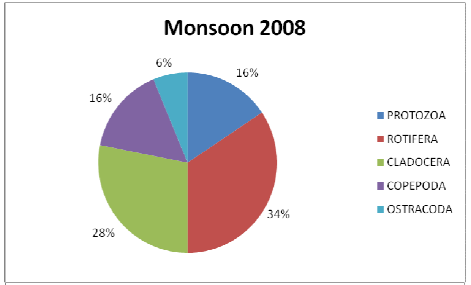Studies on Zooplankton Diversity of Kavery River at Omkareshwar Area
Keywords:
Kavery River, zooplankton, biological Indicators, aquatic biotaAbstract
Air, water, land, flora and fauna are the natural resources of the earth. Water is vitally important substance. It is the medium, which gave birth to first primitive living molecules. The role of planktonic organisms in aquatic environment is an essential link in the food chain and they are capable of affecting the entire aquatic biota. For the study of water quality, the limnological observation is needed. As the living organisms found in water are reliable indicators of water quality. Most of the organisms are being extensively used as indicators of water pollution. The biological indicators provide a direct clue and quick information of the aquatic systems. In present study, the zooplankton of the River Kavery was studied for a period of one year. It deals with the total zooplankton diversity and seasonal variation of river Kavery. The qualitative samples observed from the study site showed an annual species diversity of 48 species. Out of 4809 species belonged to Protozoa, 15 to Rotifera, 16 to Cladocera , 06 to Copepoda and 02 to Ostracoda .The maximum zooplankton species(45) were recorded in summer 2009 and the minimum species diversity (31) occurred in the winter season 2008-09 at the study site of river Kavery. The rich diversity of plkankton in River Kavery may be due to sufficient nutrients present in the river.
References
Agrawal, S.K.and Gautam,P.G.(1985): Potamozooplankton periodicity in river Chambal at Kota.Acta Ecol,7:9-11.
Anderson, G.C.,Comita, G.W.and Engstrom,H.V.(1955): A note on the phytoplankton-zooplankton relationship in two in Washington. Ecol,36:757-759.
Ansari,S.and Raja, W. (2007): Zooplankton diversity in freshwater bodies of Aligarh region. Proc. DAE-BRNS National Symposium on Limnology (NSL-07) (Eds.Venkataramani et al.)
Bhatiya,S.B.(1970 ): First recorded of recent freshwater ostracods from the Kashmir valley 11(1) Ostacodes d’eau douce.,Inst.Zool. Acad. Sci.U.S.S.R., 31: 1-334.
Models of Diversity Training: Handbook of Intercultural Training, 2nd Edition, Chapter 16, pg. 282-303, Sage 1996.
Ovie, S. I. (2011): A synopsis of the zooplankton fauna of Lakes Kainji and Jebba. In: Forty years on Lake Kainji fisheries research. Eds: Raji, A. Okaeme, A. N. and Ibeun, M. O. NIFFR, New-Bussa, Nigeria. Vol. 1: 133-143.
Aguigwo, J. N. (1998): Studies on the physico-chemical parameters and plankton productivity of a productive stream. Journal of Aquatic Science, 13: 9–13.
Allan, J. D. (2001): Stream Ecology: structure and function of running waters. School of Natural Resources and Environment, University of Michigan, USA. Kluwen Academic Publishers. 175pp.
Vladimir, S. C. (1983): Rotifers as indicators of water quality. Hydrobiologia, 100(1): 169-201.
Welcomme, R. L. (1975): Fisheries ecology of African floodplains. FAO CIFA Technical Paper

Downloads
Published
How to Cite
Issue
Section
License

This work is licensed under a Creative Commons Attribution 4.0 International License.
Authors contributing to this journal agree to publish their articles under the Creative Commons Attribution 4.0 International License, allowing third parties to share their work (copy, distribute, transmit) and to adapt it, under the condition that the authors are given credit and that in the event of reuse or distribution, the terms of this license are made clear.





